Related Research Articles
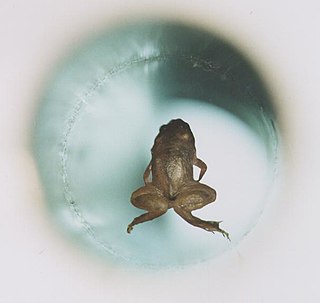
The Ig Nobel Prize is a satiric prize awarded annually since 1991 to celebrate ten unusual or trivial achievements in scientific research. Its aim is to "honor achievements that first make people laugh, and then make them think." The name of the award is a pun on the Nobel Prize, which it parodies, and on the word ignoble.

Sir John Carew Eccles was an Australian neurophysiologist and philosopher who won the 1963 Nobel Prize in Physiology or Medicine for his work on the synapse. He shared the prize with Andrew Huxley and Alan Lloyd Hodgkin.

Jasmuheen is a proponent of "pranic nourishment" or breatharianism, the practice of living without food or fluid of any sort and regarded by the scientific community as a lethal pseudoscience. She makes appearances at New Age conferences worldwide, has hosted spiritual retreats in Thailand and has released books and audio recordings.
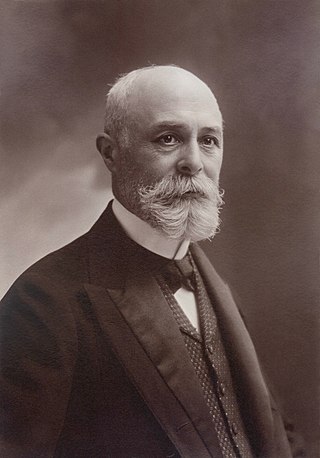
Antoine Henri Becquerel was a French engineer, physicist, Nobel laureate, and the first person to discover evidence of radioactivity. For work in this field he, along with Marie Skłodowska-Curie and Pierre Curie, received the 1903 Nobel Prize in Physics. The SI unit for radioactivity, the becquerel (Bq), is named after him.
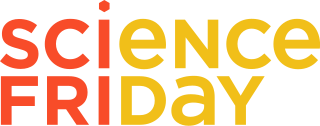
Science Friday is a weekly call-in talk show that broadcasts each Friday on public radio stations, distributed by WNYC Studios, and carried on over 470 public radio stations. SciFri is hosted by science journalist Ira Flatow and was created and is produced by the Science Friday Initiative. The program is divided into two one-hour programs, with each hour ending with a complete sign-off. The focus of each program is news and information on science, nature, medicine, and technology. The show originated as the Friday episode of the daily call-in talk show Talk of the Nation, but was spun off as a series in its own right when Talk of the Nation was canceled in June 2013.

A pitch drop experiment is a long-term experiment which measures the flow of a piece of pitch over many years. "Pitch" is the name for any of a number of highly viscous liquids which appear solid, most commonly bitumen, also known as asphalt. At room temperature, tar pitch flows at a very low rate, taking several years to form a single drop.
Inattentional blindness or perceptual blindness occurs when an individual fails to perceive an unexpected stimulus in plain sight, purely as a result of a lack of attention rather than any vision defects or deficits. When it becomes impossible to attend to all the stimuli in a given situation, a temporary "blindness" effect can occur, as individuals fail to see unexpected but often salient objects or stimuli.
George H. Goble is a staff member at the Purdue University Engineering Computer Network and a 1996 Ig Nobel Prize winner.
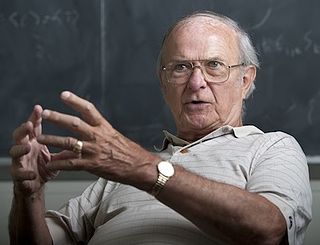
Carl Richard Hagen is a professor of particle physics at the University of Rochester. He is most noted for his contributions to the Standard Model and Symmetry breaking as well as the 1964 co-discovery of the Higgs mechanism and Higgs boson with Gerald Guralnik and Tom Kibble (GHK). As part of Physical Review Letters 50th anniversary celebration, the journal recognized this discovery as one of the milestone papers in PRL history. While widely considered to have authored the most complete of the early papers on the Higgs theory, GHK were controversially not included in the 2013 Nobel Prize in Physics.

Sir Andre Konstantin Geim is a Russian-born Dutch-British physicist working in England in the School of Physics and Astronomy at the University of Manchester.

Abhijit Vinayak Banerjee is an Indian-born naturalized American economist who is currently the Ford Foundation International Professor of Economics at Massachusetts Institute of Technology. Banerjee shared the 2019 Nobel Memorial Prize in Economic Sciences with Esther Duflo and Michael Kremer "for their experimental approach to alleviating global poverty". He and Esther Duflo, who are married, are the sixth married couple to jointly win a Nobel Prize.
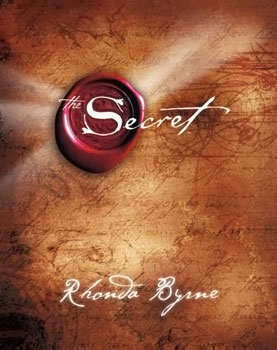
The Secret is a 2006 self-help book by Rhonda Byrne, based on the earlier film of the same name. It is based on the belief of the pseudoscientific law of attraction, which claims that thoughts can change a person's life directly. The book alleges energy as assurance of its effectiveness. The book has sold 30 million copies worldwide and has been translated into 50 languages. Scientific claims made in the book have been rejected by a range of critics, pointing out that the book has no scientific foundation.
Daniel James Simons is an experimental psychologist, cognitive scientist, and Professor in the Department of Psychology and the Beckman Institute for Advanced Science and Technology at the University of Illinois.
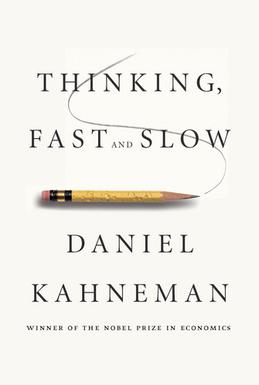
Thinking, Fast and Slow is a 2011 popular science book by psychologist Daniel Kahneman. The book's main thesis is a differentiation between two modes of thought: "System 1" is fast, instinctive and emotional; "System 2" is slower, more deliberative, and more logical.

Christopher F. Chabris is an American research psychologist, currently Senior Investigator (Professor) at Geisinger Health System, visiting fellow at the Institute for Advanced Study in Toulouse, France, and associate professor of Psychology and co-director of the Neuroscience Program at Union College in Schenectady, New York. He is best known as the co-author of the popular science book The Invisible Gorilla, which presents the results of research into attention and other cognitive illusions.
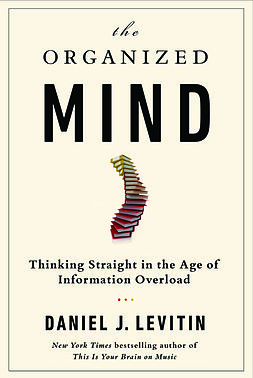
The Organized Mind: Thinking Straight in the Age of Information Overload is a bestselling popular science book written by the McGill University neuroscientist Daniel J. Levitin, PhD, and first published by Dutton Penguin in the United States and Canada in 2014. It is Levitin's 3rd consecutive best-seller, debuting at #2 on the New York Times Best Seller List, #1 on the Canadian best-seller lists, #1 on Amazon, and #5 on The London Times bestseller list.
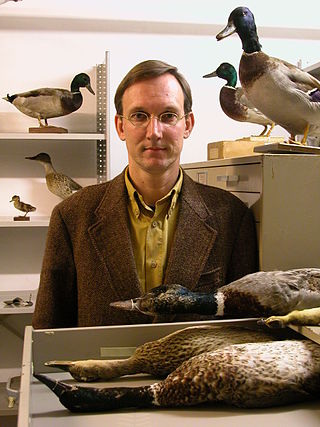
Cornelis W. "Kees" Moeliker is a Dutch biologist and director of the Natural History Museum Rotterdam. He is also European Bureau Chief of the Annals of Improbable Research.

The 2007 Zell am See mid-air collision was an aviation accident that occurred on 5 March 2007, at 10:53 a.m. CET (09:53 UTC), in which eight people died when an Aérospatiale SA 332 Super Puma helicopter, operated by Helog, collided with a private Diamond DV20 Katana light aircraft near Zell am See, Austria.
According to the invisible ships myth, when European explorers' ships approached either North America, South America, or Australia, the appearance of their large ships was so foreign to the native people that they could not even see the vessels in front of them. It is likely based on a passage of Joseph Banks' diary describing the HMS Endeavour's arrival in Botany Bay. Banks wrote that the natives did not appear surprised or concerned from a distance, but unlike the myth, once the ships approached land they were confronted by armed men. Though the common versions of the myth are apocryphal and not based in science, it has been promoted by New Age personalities, prominently in the 2004 film What the Bleep Do We Know!?